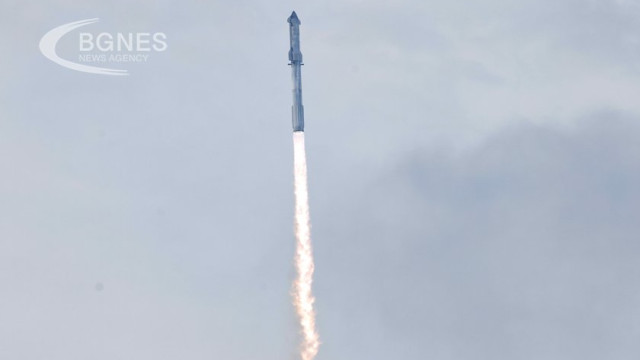Starship, the world's most powerful rocket, flew farther and faster than ever during its third test flight, although it was eventually lost on re-entry into the atmosphere over the Indian Ocean, SpaceX said.
The liftoff from the company's Star base in southeast Texas occurred around 8:25 a.m. local time (1:25 p.m. GMT) and was live streamed in a webcast that was eventually watched by more than 3.5 million people on the X platform.
The sleek mega-rocket is vital to NASA's plans to land astronauts on the moon later this decade - and to Elon Musk's hopes of eventually colonizing Mars.
Two previous attempts have ended in spectacular explosions, though that's not necessarily a bad thing: the company has adopted a rapid trial-and-error approach to speed up development, and that strategy has brought success in the past.
When Starship's two stages come together, the rocket is 121 meters tall.
Its super-heavy accelerator produces a thrust of 74.3 megajoule-tons, almost twice as much as the world's second most powerful rocket - NASA's Space Launch System (SLS) - although the latter is already certified and Starship is still a prototype.
Starship's third test launch in a fully kitted configuration was its most ambitious yet, and the company said it has succeeded in many of its goals.
These included opening and closing Starship's payload bay doors to test its ability to deliver satellites and other cargo into space.
High-resolution footage from an onboard camera showed Starship firing its engines into space, with the shape of Earth visible in the background. It developed a top speed of more than 26,000 km/h and reached an altitude of more than 200 km.
Starship flew halfway across the globe, then began the descent phase over the Indian Ocean, with engineers delighted to see the ship's heat shield, made up of 18,000 hexagonal tiles, glowing red.
But ground control stopped receiving signals when the ship was 65 km above sea level, and announcers declared the ship "lost" before it could achieve its ultimate goal of splashing into the water.
"Starship will make life multi-planetary," Musk, the billionaire founder of the company, wrote afterwards on X, highlighting the progress made on this test flight.
The first so-called "integrated" test was conducted in April 2023.
SpaceX was forced to blow up Starship within minutes of launch as the two stages failed to separate.
The rocket disintegrated into a fireball and crashed into the Gulf of Mexico.
A second test in November 2023 fared little better: both then exploded over the ocean in what the company euphemistically called a "rapid unplanned disassembly."
SpaceX's strategy of conducting tests in the real world rather than in labs has paid off in the past.
Its Falcon 9 rockets have become powerhouses for NASA and the commercial sector, and the Starlink internet satellite network now covers dozens of countries.
But the clock is ticking for SpaceX to be ready for NASA's planned return of astronauts to the moon in 2026, using a modified Starship spacecraft as a lander.
In the rear-view mirror is China, which plans to land its first crew on the Moon in 2030.
SpaceX not only has to prove it can launch, fly and land Starship safely - it also has to show it can send multiple "Starship tankers" into orbit to refuel the main Starship for its onward journey to the Moon. / BGNES







